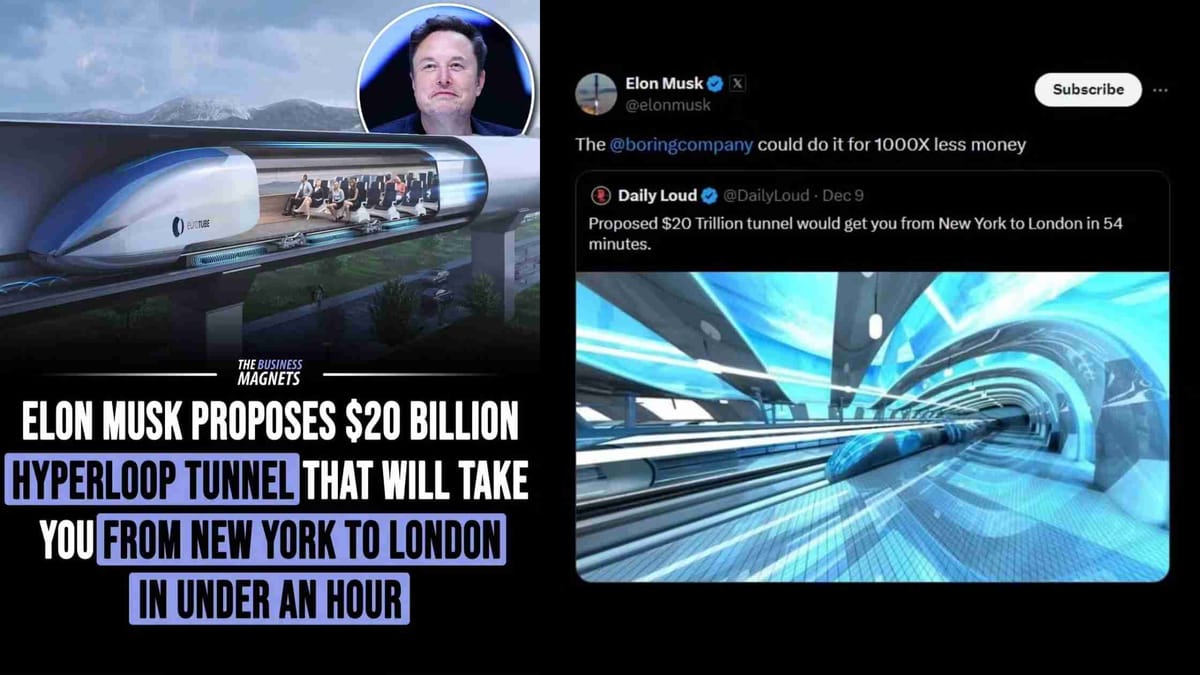Elon Musk's Ambitious Vision: A 3,000-Mile Underwater Tunnel from New York to London
In a move that could revolutionize transatlantic travel, Elon Musk has proposed an audacious $20 billion project to construct a 3,000-mile underwater tunnel connecting New York and London. This futuristic endeavor aims to slash travel time between the two cities to a mere 54 minutes.

Hyperloop Technology: The Heart of the Project
At the core of this groundbreaking project lies Hyperloop technology. The concept involves vacuum-sealed tunnels and magnetic levitation, propelling passenger pods at mind-boggling speeds of over 3,000 mph.
This technology, still largely experimental, promises not only unprecedented speed but also remarkable efficiency and sustainability.
Financial and Technological Challenges
While Musk's The Boring Company claims it can deliver the project at a fraction of previous $19.8 trillion estimates, several formidable challenges remain. Experts point to the immense oceanic pressure at such depths, which would require revolutionary engineering solutions to withstand.
Additionally, the project must account for seismic risks, as underwater tunnels would be susceptible to the forces of tectonic activity.
Funding and International Collaboration
Securing the necessary funding is another significant hurdle. A project of this magnitude would require a colossal investment, likely necessitating a mix of private and public funding sources.
Furthermore, international coordination poses its own set of challenges. With the tunnel spanning multiple jurisdictions, extensive collaboration between governments and regulatory bodies would be essential to navigate legal and logistical complexities.
Environmental and Technological Impacts
The environmental impact of such a project cannot be overlooked. Building an underwater tunnel would disrupt marine ecosystems, and mitigating these effects would require careful planning and implementation of conservation measures.
Additionally, the experimental nature of Hyperloop technology means there are still many unknowns. Ensuring the safety and reliability of this system will be crucial to its success.
The Path Forward
Despite the numerous challenges, Musk's vision for an underwater tunnel connecting New York and London represents a bold leap towards the future of transportation.
If realized, this project could set a new standard for global travel, combining cutting-edge technology with ambitious engineering. While the road ahead is fraught with obstacles, the potential benefits make it a venture worth pursuing.
By tackling the financial, technological, and environmental challenges head-on, Musk and The Boring Company could pave the way for a new era of rapid, efficient, and sustainable travel.
As the project progresses, it will undoubtedly capture the world's attention, showcasing the possibilities of human ingenuity and innovation.




